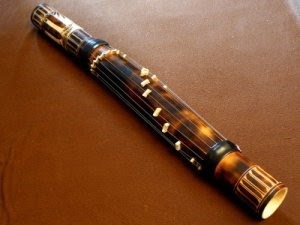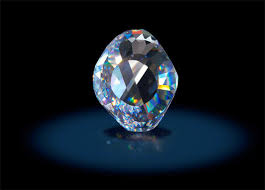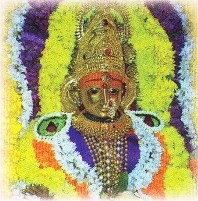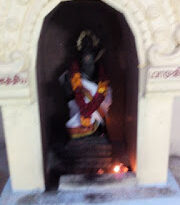Indian Heritage in Madagascar Island
Indian Heritage in Madagascar Island
Madagascar is an island country in the Indian Ocean, off the coast of Southeast Africa. The nation comprises the island of Madagascar (the fourth-largest island in the world), as well as numerous smaller peripheral islands. Following the breakup of the super continent Gondwana, Madagascar split from the Indian peninsula around 88 million years ago, allowing native plants and animals to evolve in relative isolation. Consequently, Madagascar is a biodiversity hotspot; over 90% of its wildlife is found nowhere else on Earth. The island’s diverse ecosystems and unique wildlife are threatened by the encroachment of the rapidly growing human population and other environmental threats.
1)Introduction of Religion in Madagascar:
The history of Hinduism in Madagascar began with the arrival of primarily Gujarati from the Saurashtra region of India as far back as 1870, at which time Madagascar was a French colony known as Malagache. These were predominantly Muslim (Khojas, Ismailis and Daoudi Bohras), but a small number were Hindus.
One of the first Hindu Temple situated in Madagascar:
TheRhada Krishna Hindu Temple is located in the centre of Diego Suarez (Antsiranana), the northernmost town in Madagascar.
A sign next to the temple reads: The first Hindu Settlers arrived mostly from Bombay and Rajkot (India) in 1900. They were speaking the same language – the “Guajarati” – as the Indian Muslims. In the beginning, the Hindus practiced their religion in a rented building located in Colbert Street, next to where “Nourani Shop” is now. The current temple, Rhada Krishna, was built in early 1991 thanks to the determination of a few members of their community.
The International Religious Freedom Report 2006 reported that there is a small Hindu presence in Madagascar. Many of them are business owners, or IT professionals who have lived in the country for generations. The majority speak Hindi or Gujarati, although some other Indian languages are spoken. Nowadays, younger generations speak at least three languages, including French or English, Gujarati and Malagasy.
2)Relation to Madagascar –India Link via Indonesia:
India–Madagascar relations refers to the current and historical relationship between India and Madagascar. Relations between Madagascar and western India began in the 18th century and regular trade dates to at least the late 19th century.Hinduism is one of the world’s oldest religions, and has over 900 million followers worldwide. Though most of the Hindus live in India there are substantial numbers present in Nepal, Bangladesh and Indonesia.


Our Ancient Guru Sri Adhi Shankaracharya of Kanchi gave a series of talks in Madras (Chennai) in 1932 regarding the Hindu symbols and names found all over the world. He mentioned that 75 percent of the place names in Madagascar were Sanskrit names, he also pointed that many names carry from the name of Rama. Now there is some scientific proof to confirm the links between India and Madagascar via Indonesia.
Prestigious science magazine New Scientist (issue dated 24th March 2012) has published a news story that Madagascar settlers came from Indonesia 1500 years ago. Around that time a Hindu empire flourished in Indonesia.Mulavarman’s inscription in Sanskrit was discovered in the middle of thick tropical forest in the last century. Mulavarman’s fourth century Sanskrit inscription spoke of the Yagna he performed, the pole he erected (Yupa Sthamba) and the donations he made to Brahmins. Mulavarman also said about his forefathers ruling that place. Since the migration took place around that time no wonder we see so many Sanskrit names in Madagascar Island.
We know from language and culture that modern Malagasy have African and Indonesian ties. When the Scientists analysed the genes of local women it showed 93 percent had Indonesian links. As we can see after the Indonesians, came the Bantu Africans, the Arabs, Portuguese, French and the British. So it is difficult now to recognise many of the original names. But rice is cultivated like India and Indonesia. Two hundred million years ago the island split from South Western India. Now the sapphire dug out in Madagascar is similar to Indian and Sri Lankan gem stones. Malagasy language is of Malayo-Polynesian origin. Since the South East Asians received the script, architecture, language via the east coast of India we may find some Tamil influence in the island. Gujarati Hindus have migrated to the island from East Africa in the nineteenth century. Despite racial differences, Malagasy people share a common culture (practised with regional differences) and language.
Some signs that show the link with India:
1.Unlike African countries people traditionally cultivate rice, which is the South Indians staple diet.
2.Swastika symbol is found.
3.People worship their dead which is part of Hindu life. Hindus have to do Pancha Yagna (five sacrifices) every day. Remembering them and giving oblations is done by orthodox Hindus. Other Hindus do it on monthly (Amavasya Tarpanam) or Annual (Tithi) basis in India.
4.Boabab is considred a holy tree like Peepal tree in India.
5.Malagasy houses are accurately oriented so that the door faces west. In India most of the houses will face East.
6.Merina is the tribe that ruled Malagasy for many centuries. They came from Malaya-Indonesia area. Merina may be a corrupted form of Varuna, the Hindu Sea God. Linguistically M=V=P changes are possilbe.
7. Like Hindus worship monkeys (Hanuman) they worship Lemurs and call them Indra/ Indri. Lemurs are considered their ancestors.
8.Valiha is a musical instrument made up of a long piece of bamboo with 15 strings stretched along its length between two collars. It is not found anywhere in Africa, but in Thailand, Burma and the East.
9. Famadi Hany (turning the dead): People here exhume the body of the relatives every year and carry them to the land and then start farming. We have no similarity with any culture in this regard, but the word Famadi may be interpreted as Samadhi (Hindu Grave). Bali is a predominantly Hindu island in Indonesia where some strange customs like this exist.
10.Anovorano: Sacred lake where the women feed the crocodiles. As soon as the women call them, the crocodiles come. We have only Naga Panchami where the Hindu women feed the snakes every year.
People’s names: Ravalomanana ,Ratsiraka ,Queen Rana Valona. Riija Rama is a name found in the island which may be of Lord Raja Rama.
3)The Culture and Tradition of Madagascar:
The culture of Madagascar is rooted in diverse tribal heritages and customs, with ancestor respect and traditional festivals at its heart. Family is all-important, and male circumcision is still performed, although nowadays it’s done at the local hospital whilst family and friends celebrate at home. Recent laws have improved the status of women’s rights in Malagasy society as well as in the workplace, although rural women still engage in petty commerce to supplement the husband’s earnings.
Madagascar people love wearing traditional clothes and they prefer various shades of vibrant color. European styled outfits are quite prevalent in Madagascar dressing. The dye used in the clothes is natural and they are extracted from berries, minerals and various such natural resources. The elegantly weaved clothes are known as “lamba” and serves as traditional ceremonial gift in Madagascar. The Malagasy offers clothes to the rulers, spirits and ancestors to receive blessings. Exchange of clothing as gifts is done to demonstrate the mutual respect among the ethnic groups.

As per the tradition of Madagascar, men offer clothes to brides in the marriage ceremony and the bride and groom are encircled in single cloth as a symbol of their union forever. Clothes are also offered to the ancestors and it forms the part of the marriage ceremony. There are stores selling western clothes for children and adults alike. The European influence on Madagascar clothing is a result of French and British colonization. Thus clothing in Madagascar is various and there traditional Madagascar clothing is just the reflection of the island’s rich culture.
Rice (vary) is the cornerstone of the Malagasy diet and is typically consumed at every meal.Rice makes the staple of the Malagasy diet; fish, beef or chicken are just the frills on the side.Noodles are the natural option other than rice. Like in India Garlic, onions, ginger, tomatoes, mild curry, and salt are the most common ingredients used to flavour dishes, and in coastal areas other ingredients such as coconut milk,vanilla, cloves or turmeric may also be used.The most common and basic condiment, sakay, is a spicy condiment made from red or green chili pepper.Indian-style condiments made of pickled mango, lemon, and other fruits (known as achards or lasary), are a coastal speciality;in the highlands, lasary often refers to a salad of green beans, cabbage, carrots and onion in a vinaigrette sauce, popular as a side dish or as the filling of a baguette sandwich.

The Valiha—the bamboo tube zither considered the national musical instrument of Madagascar. Malagasy music can be roughly divided into three categories: traditional, contemporary and popular music.Traditional musical styles vary by region and reflect local ethnographic history.
Traditional houses in Madagascar are likewise similar to those of southern Borneo in terms of symbolism and construction.Reflecting a widespread veneration of the ancestors, tombs are culturally significant in many regions.
Education is compulsory for five years in the Madagascar society and each area has its own individual schools and the highest literacy rate in Africa is in Madagascar itself Traditionalism and culture is much prevalent among the Madagascar people and they strictly follow their faith and age old rituals.
The Malagasy language is of Malayo-Polynesian origin and is generally spoken throughout the island.French became the official language during the colonial period, French is the official second language of the Malagasy Republic and spoken as a second language among the educated population and used for international communication. Madagascar is a francophone country.
A number of traditional pastimes have emerged in Madagascar. Moraingy, a type of hand-to-hand combat, is a popular spectator sport in coastal regions. It is traditionally practiced by men, but women have recently begun to participate.


4)Things to do in Madagascar:
Madagascar’s extraordinary natural diversity has earned the country the nickname “The Eighth Continent”.There are animals and plants that are endemic that can’t be found anywhere else in the world including the Lemur Monkeys and even see through chameleons to name a few. There are still parts of Madagascar that haven’t been discovered yet which is very rare for any country in the world.Things to do in Madagascar are divided into two categories:
a)The most popular Beaches are in Diego, Anakao, the areas surrounding Morondava, and the islands of Nosy Be, Sainte Marie, and Nosy Ve.
b)Its unique Biodiversity with 70 different species of Lemurs and see through chameleons as mentioned above.The parks you want to see are Berenty, Andasibe-Mantadia, Ankarana Montagne d’Ambre, Kirindy, Ranomafana, and Masoala.
5)Attractions in Madagascar:
*Ambohimanga-Set close to the capital, ancient Ambohimanga was the birthplace of Madagascar, known for a time as the Blue City, the Forbidden City and the Holy City. The city is surrounded by rainforest and its Royal Hill is a UNESCO World Heritage site.

*Avenue of the Baobab Trees-Located outside Morondava city of Madagascar, this magnificent avenue of stately baobabs is comprised of 12 massive trees, each 100 ft tall. Baobabs can live for up to 800 years, and the unusual size of these suggests they’re ancient, storing huge quantities of water in their trunks necessary for survival.

*Lac Anosy-This lovely lake has a central island linked to the shore by a causeway, and is the site of the tall column of the city’s monument to those who died in WWI. It’s a peaceful place, popular with locals as a refuge from the chaos of the city,Antanarivo.

*The Queen’s Palace, Tana-The palace was built by Queen Ranavalona, the largest of several buildings in the Royal complex, although a fire in 1995 destroyed much of its substance. The queen was referred to as Bloody Mary of Madagascar for her vicious treatment and executions of missionaries and citizens alike. The palace’s façade has since been restored, and royal artifacts rescued from the flames are on display.

*Andasibe Mantadia-Its easily accessible national park,combines lush rainforest with a rich biosphere and rare bird, amphibian and reptile species. Its highlights are the crocodile farm, rare orchids and the singing Indris lemurs.

*Ampijoroa National Park-It is mostly composed of dry, deciduous forests, home to the indigenous lemurs, and is a birders’ paradise for its many rare species.You can also find fish eagles, pygmy kingfishers, red-capped couas, and Lake Ravelobe, which is home to Nile crocodiles. The park has no roads so all exploring must be done on foot and overnight camping is allowed.

*Ifaty-lies on Madagascar’s southwest coast and is compromised of two fishing villages located on wide beaches. The coral reef which protects the coastline from rough seas, creating the perfect conditions for fishing, snorkeling and diving. The area inland is desert, known for generations of spiny forests of baobab trees.

*Ile Sainte Marie-It is one of the Malagasy archipelago’s loveliest islands. In the shallow waters off beautiful Baie des Forbans, the wreck of pirate ships can still be seen, and humpback whales visit during summer and fall. Snorkeling and diving off the picturesque bay is a rare treat.

*Masoala National Park-It includes three marine parks within its boundaries. The watery reserves, Tampolo, Ifaho and Ambodilaitry, are a hub for snorkeling and kayaking, while a trek through the park’s rainforests reveals the Aye-Aye, the largest nocturnal primate on earth, as well as ten lemur species and the scarlet Tomato frog.

*Ampefy-The Ampefy is the volcanic region classified for ecotourism destination for its 40 crater lakes, geysers, waterfalls, and rushing rivers. It’s an ideal starting place for hikes, with trails leading through vanilla and avocado plantations and pirogue tours around the lake.

*Mahajanga-This is located on the estuary of Madagascar’s largest river, Betsiboka, the city of Mahajanga has shark-free beaches, an attractive downtown, offshore islands boasting caverns, and the world-famous Antanimbaryo gold market at nearby Maevatanana. Near to the sea, the iron-red waters of the river form the spectacular Betsiboka Rapids, and Nile crocodiles haunt the rivers and large streams.

*President’s Palace, Antananarivo-The most imposing building is the President’s palace in the capital with rococo architecture built in 1890 and has borne witness to the country’s struggle for freedom throughout most of the 20th century. It’s only possible to view the exterior, but as a major landmark, it shouldn’t be missed.

*Ranomafana Hot Springs-The spectacular national park is seen with the setting of these thermal baths coupled with the health-giving effects of the mineral-rich waters make this a real treat for the senses. Ranomafana town lies in the center of Madagascar and the baths are open daily.

*Tsimbazaza Zoo and Botanical Garden-The Tsimbazaza zoo and botanical garden in Antananarivo is an interesting day away from the crowded city center. Present are mostly indigenous wildlife species, including Aye-Ayes and lemurs, and the gardens are a treasure-house of native flowers, trees and diverse palm varieties. The star attraction for birders is the large population of resident egrets.

6)Festivals and holidays,events:
Pop culture is seen in vibrant Madagascar holidays and festivals throughout the year all over the country, with many events attracting a significant number of tourists. The celebrations are based on a variety of traditions ranging from holy days to cultural rituals and national holidays, with the Santabari festival and Donia Music Festival two of the favorites.
New Year’s Day
The Malagasy people celebrate New Year’s Day along with the rest of the world from midnight on December 31 through January 1. Family visits, eating out and street parties mark the occasion.
Alahamadi Be
Alahamadi Be is Madagascar’s traditional New Year’s Day, which takes place in March and lasts for two days. Crowds hit the street in celebration, homes are decorated in lights and friends and family visit to wish each other well. Traditional music and dance plays a part in the festivities.
Martyrs’ Day
Martyrs’ Day on March 29th commemorates the 1947 rebellion against French colonial rule which eventually led to Madagascar’s independence after thousands of lives had been lost. The day is a public holiday in which the dead are memorialized for their sacrifices.
Santabary Festival
The ancient Santabary Festival takes place in late April/early May to give thanks for the year’s first rice harvest. Eating, drinking, traditional music and dance are all part of the celebrations, and local customs vary across the country.
Labour Day
Labour Day, held on May 1, is a national holiday, with city folks taking the time to visit the countryside and beaches for picnics and a day of relaxation.
Independence Day
Independence Day in Madagascar is June 26, a national holiday which commemorates the country’s final shaking of colonial rule, and celebrated all across the archipelago with feasting, drinking, music, and dance.
Feria Oramena
Feria Oramena held in June focuses on Madagascar’s favorite seafood, lobsters and full of carnival atmosphere. Exhibitions and lots of fish dishes are enjoyed by all.
Fisemana
The Fisemana festival, held by the Antakarana people, is a purification ritual taking place every June. The customs go back centuries and are performed by local soothsayers.
Famadihana
It is the traditional event turning of the bones, is a three-month family-oriented ritual beginning in June in Madagascar. The bodies of recently-passed family members and ancestors are taken from the crypt, re-dressed in silk shrouds and reburied.
Hiragasy
This event is a traditional form of entertainment in Madagascar much-loved in July, first seen in the 18th century. Competing players perform a five-themed spectacle of oratory, dance, music, drinking and eating contests amid much merriment.
Donia Music Festival
The Donia Music Festival is held in September at the Hell-Ville Stadium on Nosy Be Island, and is a combination of Malagasy music, sport and cultural events. The festivities last for a full week and draw in over 40,000 spectators.
Madajazzcar
It is a massive, two-week long celebration of jazz held in venues all over the capital in October. International musicians, singers and thousands of visitors attend the events.



